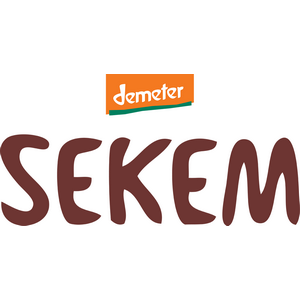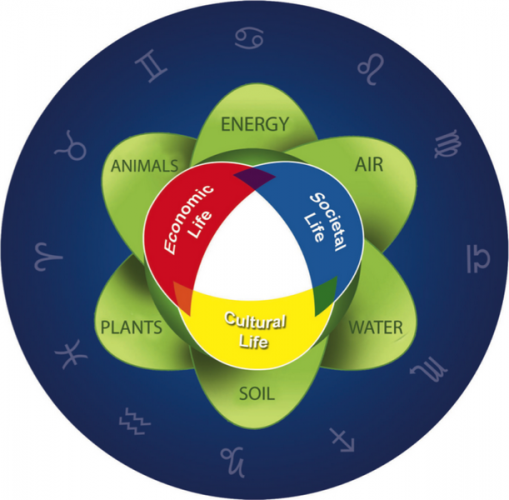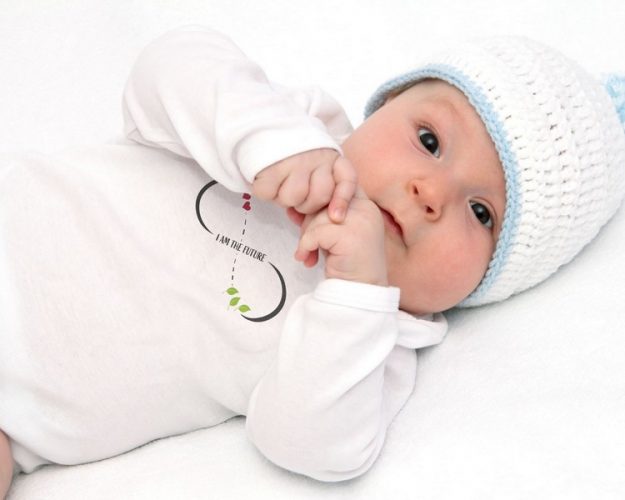When it comes to sustainability, cotton is often put in a bad light. How exactly does this work? Cotton is one of the oldest crops in the world and has been used for more than 8000 years to make textiles and clothing. If you choose cotton from biodynamic agriculture made at SEKEM, you choose fair trade, sustainability and a viable future for people in Egypt.
Also interesting: babysuit from SEKEM with Demeter quality mark

Cotton is still an important material that is being cultivated all over the world. Apart from textiles, cotton fibers are also used in, for example, coffee filters and banknotes. Cooking oil can even be extracted from the cotton seeds. Yet, according to the United Nations, most chemical agricultural products (pesticides) are used in conventional cotton farming, too. With major problems for the environment and people.
Sustainable alternative: biodynamic cotton

Conventional cotton crops are often genetically modified and need a lot of pesticides. Moreover, the cultivation of cotton requires a lot of water. This is especially a problem in countries dealing with water scarcity. So, don’t buy more cotton clothing then? You can also choose from sustainably cultivated cotton from biodynamic agriculture. SEKEM in Egypt is a great example of sustainably cultivated cotton from biodynamic agriculture where the working conditions of the people who grow it are also very good. An important principle here is that the living conditions of the people is good and future-oriented, too .
Contribution to climate control
At SEKEM they grow biodynamic cotton. This anthroposophical community in the middle of the Egyptian desert is an oasis for the people who live and work there. More than 40 years ago people worked here to turn a piece of dead desert into vital soil through biodynamic agriculture. SEKEM has since transformed some 680 hectares of desert land into sustainable biodynamic agriculture on which they, for example, grow cotton to make textile. On the fields, at least 20% water is saved and an average of around 3 tons of CO2 per hectare per year is absorbed. A clear sign of biodynamic agriculture making an important contribution to controlling climate change.
About 73% of worldwide cultivated cotton is genetically modified to kill larvae on cotton plants. This means aphids and other insects can reproduce very quickly, which leads to the use of more pesticides. This in turn leads to pollution of water and soil. The biodynamic agriculture works with GMO-free crops. Its production costs are slightly higher, but its (invisible) costs for damages to the environment and public health are much lower. In the long term (the Future!) this leads to a profitability for the whole world.
Example will be followed

Over the years, SEKEM has developed a holistic, biodynamic concept for cotton cultivation, in close collaboration with scientists and farmers. SEKEM since supports various farmers in the transition from conventional to biodynamic cotton cultivation and other plants. They ensure that farmers receive stable prices for their products. They also help with the construction of sanitary installations, the supply of water filters or with safety trainings. This helps to reduce health damage to the population and to raise awareness about the added value of sustainable agriculture.
How ‘cute’ exactly is your babysuit?
Climate control is not something that does not concern you. Do you buy conventional cotton clothing? Then be aware of the problems that this entails. As long as you buy cheaper textile, the manufacturers will continue to produce this. Be aware of what that cute suit that your baby is wearing is made of, where it is made and what it does to the community there. Otherwise the future generation (your children and also the children of your children) will pay the price for the damage that we cause with our purchases nowadays. You have a choice to do it differently, as SEKEM shows.
I am the Future

Sigrid has had SEKEM make a babysuit made from biodynamic cotton, carrying the official Demeter quality mark for biodynamic agriculture. With this quality mark you know for sure that you are buying something where the ecological impact has been kept very low, that the environment has not been damaged, that the people at the base receive a reasonable income and work in the right circumstances. You benefit from the high-quality pesticide-free biodynamic cotton, which you can use safely on your baby’s bare, pure skin. Both this new fledgling happiness and the children of the people further away who made it, are our future. If you buy I am the Future, then you contribute to ensuring that there is actually a future for them as well, right?


Geef een reactie